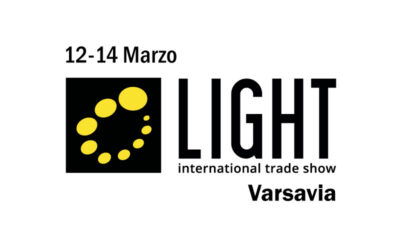Il Polycarbonate UV Stabilized – Antishock è un materiale di alta qualità progettato per offrire prestazioni eccellenti in condizioni esigenti. Questo policarbonato è, rispetto al policarbonato standard, più resistente all’esposizione ai raggi UV, prevenendo il degrado e mantenendo le sue proprietà meccaniche e ottiche più a lungo. Per la massima resistenza all’esposizione solare forniamo profilati e tubi con un’ulteriore strato di anti UV specifico.
| Physical | Nominal Value Unit | Test Method |
|---|---|---|
| Density | 1.20 g/cm3 | ISO 1183 |
| Apparent Density | 0.66 g/cm3 | ISO 60 |
| Melt Mass-Flow Rate (MFR) (300°C/1.2 kg) | 3.0 g/10 min | ISO 1133 |
| Melt Volume-Flow Rate (MVR) (300°C/1.2 kg) | 3.00 cm3/10 min | ISO 1133 |
| Molding Shrinkage | - | - |
| Across Flow | 0.60 to 0.80% | ISO 2577 |
| Flow | 0.60 to 0.80% | ISO 2577 |
| Across Flow: 2.00 mm2 | 0.75% | ISO 294-4 |
| Flow: 2.00 mm2 | 0.75% | ISO 294-4 |
| Water Absorption | - | ISO 62 |
| Saturation, 23°C | 0.30% | - |
| Equilibrium, 23°C, 50% RH | 0.12% | - |
| Mechanical | Nominal Value Unit | Test Method |
|---|---|---|
| Tensile Modulus (23°C) | 2400 MPa | ISO 527-2/1 |
| Tensile Stress | - | ISO 527-2/50 |
| Yield, 23°C | 67.0 MPa | - |
| Break, 23°C | 65.0 MPa | - |
| Tensile Strain | - | ISO 527-2/50 |
| Yield, 23°C | 6.3% | - |
| Break, 23°C | 100% | - |
| Nominal Tensile Strain at Break (23°C) | > 50% | ISO 527-2/50 |
| Tensile Creep Modulus | - | ISO 899-1 |
| 1 hr | 2200 MPa | - |
| 1000 hr | 1900 MPa | - |
| Flexural Modulus3 (23°C) | 2400 MPa | ISO 178 |
| Flexural Strength3 | - | ISO 178 |
| 3.5% Strain, 23°C | 74.0 MPa | - |
| 23°C | 100 MPa | - |
| Flexural Strain at Flexural Strength | - | ISO 179 |
| 23°C, 2 mm/min | 7.3% | - |
| Films | Nominal Value Unit | Test Method |
|---|---|---|
| Water Vapor Transmission Rate | - | ISO 15106-1 |
| 23°C, 100 μm, 85% RH | 15 g/m2/24 hr | - |
| Carbon Dioxide Permeability | - | ISO 2556 |
| 25.4 μm | 16900 cm3/m2/bar/24 hr | - |
| 100.0 μm | 4300 cm3/m2/bar/24 hr | - |
| Nitrogen Permeability | - | ISO 2556 |
| 25.4 μm | 510 cm3/m2/bar/24 hr | - |
| 100.0 μm | 130 cm3/m2/bar/24 hr | - |
| Oxygen Permeability | - | ISO 2556 |
| 25.4 μm | 2800 cm3/m2/bar/24 hr | - |
| 100.0 μm | 700 cm3/m2/bar/24 hr | - |
| Impact | Nominal Value Unit | Test Method |
|---|---|---|
| Charpy Notched Impact Strength 4,5 | - | ISO 7391 |
| –30°C, Complete Break | 16 kJ/m2 | - |
| 23°C, Partial Break | 70 kJ/m2 | - |
| Charpy Unnotched Impact Strength | - | ISO 179/1eU |
| –60°C | No Break | - |
| –30°C | No Break | - |
| 23°C | No Break | - |
| Notched Izod Impact Strength 6 | - | ISO 180/A |
| –30°C, Complete Break | 14 kJ/m2 | - |
| 23°C, Partial Break | 80 kJ/m2 | - |
| Multi-Axial Instrumented Impact Energy | - | ISO 6603-2 |
| –30°C | 65.0 J | - |
| 23°C | 60.0 J | - |
| Multi-Axial Instrumented Impact Peak Force | - | ISO 6603-2 |
| -30°C | 6500 N | - |
| 23°C | 5600 N | - |
| Physical | Nominal Value Unit | Test Method |
|---|---|---|
| Density | 1.20 g/cm3 | ISO 1183 |
| Apparent Density | 0.66 g/cm3 | ISO 60 |
| Hardness | Nominal Value Unit | Test Method |
|---|---|---|
| Ball Indentation Hardness | 115 MPa | ISO 2039-1 |
| Thermal | Nominal Value Unit | Test Method |
|---|---|---|
| Heat Deflection Temperature | - | - |
| 0.45 MPa, Unannealed | 138°C | ISO 75-2/B |
| 1.8 MPa, Unannealed | 127°C | ISO 75-2/A |
| Glass Transition Temperature | 145°C | ISO 11357-2 |
| Vicat Softening Temperature | - | - |
| – | 146°C | ISO 306/B50 |
| – | 147°C | ISO 306/B120 |
| Ball Pressure Test (137°C) | Pass | IEC 60695-10-2 |
| CLTE | - | ISO 11359-2 |
| Flow: 23 to 55°C | 0.000065 cm/cm/°C | - |
| Transverse: 23 to 55°C | 0.000065 cm/cm/°C | - |
| Thermal Conductivity (23°C) | 0.20 W/m/K | ISO 8302 |
| Electrical | Nominal Value Unit | Test Method |
|---|---|---|
| Surface Resistivity | 1.0E+16 ohms | IEC 60093 |
| Volume Resistivity | 1.0E+16 ohm cm | IEC 60093 |
| Relative Permittivity | - | IEC 60250 |
| 23°C, 100 Hz | 3.10 | - |
| 23°C, 1 Mhz | 3.00 | - |
| Dissipation Factor | - | IEC 60250 |
| 23°C, 100 Hz | 0.00050 | - |
| 23°C, 1 Mhz | 0.0090 | - |
| Comparative Tracking Index | - | IEC 60112 |
| Solution A | 250 V | - |
| Solution B | 100 V | - |
| Electric Strength (23°C, 1.00 mm) | 34 kV/mm | IEC 60243-1 |
| Flammability | Nominal Value Unit | Test Method |
|---|---|---|
| Flame Rating - UL | - | UL 94 |
| 1.50 mm, CL, NC, WT | HB | - |
| 3.00 mm, WT | V-2 | - |
| 6.00 mm, CL, NC, WT | V-0 | - |
| Glow Wire Flammability Index | - | IEC 60695-2-12 |
| 1.00 mm | 850°C | - |
| 1.50 mm | 850°C | - |
| 2.00 mm | 850°C | - |
| 3.00 mm | 960°C | - |
| 4.00 mm | 960°C | - |
| Oxygen Index7 | 27% | ISO 4589-2 |
| Burning Rate (> 1.00 mm, US-FMVSS) | Passed | ISO 3795 |
| Flash Ignition Temperature | 480°C | ASTM D1929 |
| Needle Flame Test | - | - |
| 1.50 mm Method F | 60.0 sec | - |
| 1.50 mm Method K | 5.0 sec | - |
| 2.00 mm Method K | 5.0 sec | - |
| 2.00 mm Method F | 60.0 sec | - |
| 3.00 mm Method F | 120.0 sec | - |
| 3.00 mm Method K | 10.0 sec | - |
| Self Ingnition Temperature | 550°C | ASTM D1929 |
| UL 746 | Nominal Value Unit | Test Method |
|---|---|---|
| RTI Str (1.50 mm) | 125°C | UL 746 |
| RTI Imp (1.50 mm) | 115°C | UL 746 |
| RTI Elec (1.50 mm) | 125°C | UL 746 |
| Optical | Nominal Value Unit | Test Method |
|---|---|---|
| Refractive Index8 | 1.587 | ISO 489 |
| Transmittance | - | ISO 13468-2 |
| 1.00 μm | 89.0% | - |
| 2000 μm | 88.0% | - |
| 3000 μm | 88.0% | - |
| 4000 μm | 87.0% | - |
| Haze (3000 μm) | < 0.80% | ISO 14782 |
| Additional Information | Nominal Value Unit | Test Method |
|---|---|---|
| Electrolytical corrosion | A1 | IEC 60426 |
| ISO Shortname | PC, ELS, (..)-05-9 | ISO 7391 |


